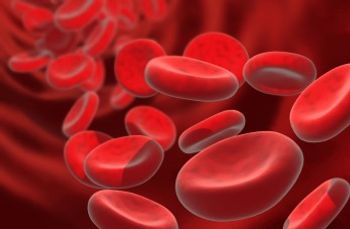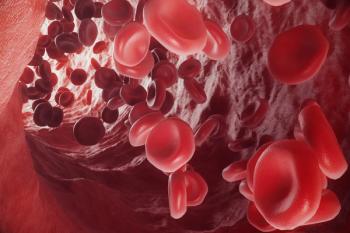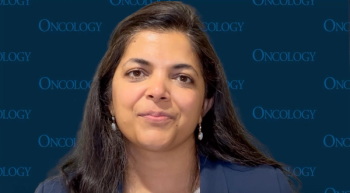
Mark Pegram, MD, Talks Predictors of Optimal Adjuvant ET Duration in Early-Stage HR+ Breast Cancer
Mark Pegram, MD, spoke about predictive and prognostic factors used to determine which patients with early-stage hormone receptor–positive breast cancer benefit from extended vs standard adjuvant endocrine therapy.
CancerNetwork® spoke with Mark Pegram, MD, Suzy Yuan-Huey Hung Endowed Professor of Medical Oncology at Stanford University School of Medicine, at the
Transcript:
Whether patients were low, intermediate-, or high-risk by CTS5, neither of those categories predicted the benefit from extended adjuvant letrozole beyond 7.5 years total. An additional 2.5 years out to 10 years was no better than stopping in year 7.5. In contrast, when the investigators looked at the BCI ratio, we found that the BCI-low patients appeared to not derive any extra benefit from longer adjuvant letrozole therapy, whereas the BCI-high patients, which is about half of all the patients, clearly had benefited from 10 years of adjuvant therapy compared to 7.5 years of integral therapy.
Moreover, the treatment by a biomarker interaction P-value was statistically significant in the case of the BCI H/I analysis but was insignificant for the CTS5 data. There was 1 additional exploratory analysis that was done by stratifying the CTS5 risk categories by BCI H/I, or vice versa. What that showed is that the CTS5 classifiers could not predict benefit in either the BCI-high or -low subjects. Conversely, there were trends in the CTS5 low-, intermediate-, and high-risk groups, with trends favoring the outcomes for the BCI-high patients in that analysis. They did not rise to the level of statistical significance because this is a smaller retrospective subset analysis. When one divides the BCI data now up into CTS5 strata of low, intermediate, and high risk, one loses statistical power as a consequence, but the trends are still intriguing and some of the P-values are marginal. It was an interesting exploratory subset analysis, and that strengthens the data. It at least adds consistency that you’re looking at something different with the BCI H/I as a predictive factor for response to extended adjuvant therapy, whereas the clinical or pathologic variables are more useful for prognostication and can’t predict endocrine therapy response a priori.
In conclusion, CTS5 did not predict a benefit of 5 years vs 2.5 years of extended letrozole therapy in the IDEAL study. BCI H/I remains the only predictive biomarker for prediction of benefit from extended adjuvant endocrine therapy. These data highlight the clinical utility of BCI as an endocrine response biomarker and emphasize that prognostic information alone does not equate necessarily to predictive information for guiding duration of adjuvant endocrine therapy. That’s counterintuitive. Most of us as clinicians feel that if you have somebody that’s high risk, they must do better with longer therapy. These data challenges that dogma. It speaks volumes that perhaps biology is more important than staging in this disease, and the IDEAL trial translational data investigating the BCI and CTS5 is a good example of this theorem.
Finally, patients with a worse prognosis are not necessarily the same patients who will benefit from longer endocrine therapy, and having a biomarker as robust as the BCI helps to bridge a gap in our current unmet clinical practice regarding the optimal duration of adjuvant therapy.
Reference
Liefers G-J, Noordhoek I, Putter H, et al. Predictive performance of breast cancer index (BCI) and clinical treatment score post-5 years (CTS5) in the IDEAL study. J Clin Oncol. 2022;40(suppl 16):545. Doi: 10.1200/JCO.2022.40.16_suppl.545
Newsletter
Stay up to date on recent advances in the multidisciplinary approach to cancer.


















































































